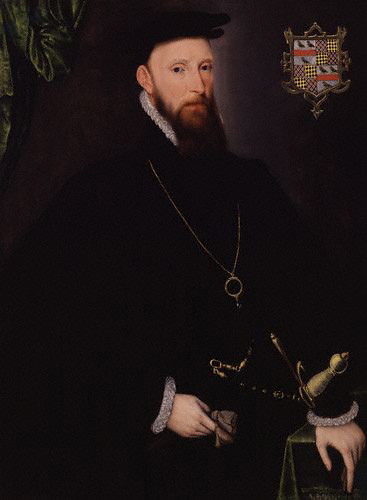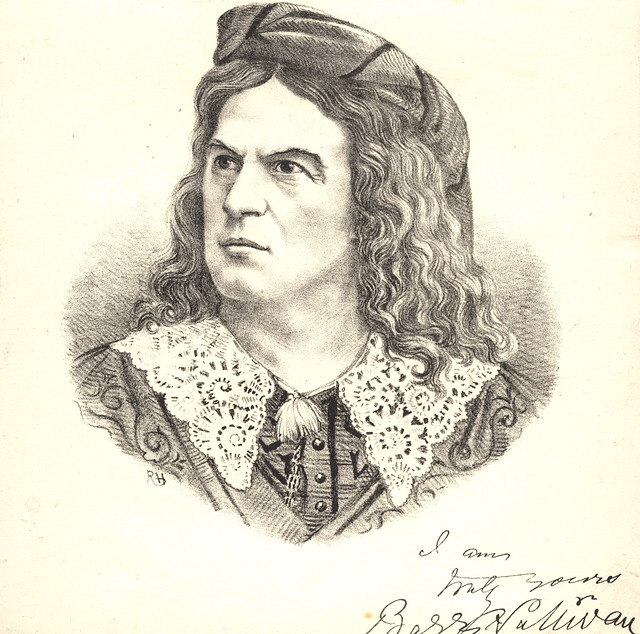John Lumley, 1st Baron Lumley

-
Description
John Lumley, 1st Baron Lumley (c.1533-1609) was an English aristocrat. John Lumley was born about 1533, was grandson and heir of John, Lord Lumley, being son and heir of his only son and heir apparent George Lumley (who had been attainted in the lifetime of his father) by Jane second daughter and coheir of Sir Richard Knightly of Upton, Northamptonshire. As a teen, Lumley set forth in a petition to King Edward VI that he was a child at the death of his grandfather in 1544, to whose honors he did not succeed because of his own father's attainder. Therefore in 1547 obtained an Act of Parliament restoring him in blood, and enacting "that he, the said John Lumley and the heirs male of hid body, should have hold, enjoy and bear the name, dignity, state and pre-eminence of a Baron of the Realm” whereby he became Baron Lumley (a new Barony being created of that name, in tail male ) and he was summoned to Parliament accordingly from 5 Oct 1553 to 5 Nov. 1605. He was made Knight of the Bath on 29 November 1553 and attended at the subsequent coronation of Queen Mary. He also served a Commissioner of Claims at the coronations of Queen Elizabeth and of James I. He was suspected of treasonable dealings with Mary, Queen of Scots, and was imprisoned in 1570 along with the Earl of Arundel, his father-in-law. In October 1586 he was one of the Judges at the trial of Mary Queen of Scots and also in 1602 of the Earl of Essex. Lumley married firstly, before 4 March 1552, Jane, the eldest of the two daughters and coheirs of Henry Fitzalan Earl of Arundel, by his first wife Catherine, daughter of Thomas Grey, 2nd Marquess of Dorset. Joan Lumley was one of the six principal ladies that sat in the third chariot of state at the coronation of Queen Mary in 1553. She was buried 9 March 1576/7, at Cheam, county Surrey (as were 3 of her children, all of whom died in infancy), near her father’s estate, Nonsuch Palace. Lumley married secondly, Elizabeth, daughter of Thomas Darcy, 2nd Baron Darcy of Chiche, by Frances, daughter of Richard Rich, 1st Baron Rich. Elizabeth survived her husband by 10 years and was buried 4 February 1616/7 at Cheam. Lumley’s Baronial seat was Lumley Castle in County Durham. However Queen Mary I had sold the Palace of Nonsuch to the Earl of Arundel in 1556 and Lumley inherited it from his father-in-law in 1580. Lumley was a leading Elizabethan connoisseur with a magnificent collection of books and paintings and during his tenure developed a major garden at Nonsuch. In 1592 Lumley remitted to Queen Elizabeth possession of Nonsuch, and so after 36 years it again became a Royal Palace. Lumley stayed on at Nonsuch as Keeper of the Palace. After his death in 1609 the books were purchased by King James I and became the foundation of the Royal Library – which eventually became the basis of the British Library. John Lumley died, 11 April 1609, aged 76, without any surviving children. At his death the Barony of Lumley (created 1547) became extinct. He was buried at Cheam along with his first wife; a tomb and monument there at St. Dunstan’s Church memorialize Lumley and his 2 wives. The composer John Bull wrote one of his greatest works to Lumley's memory, contained in the Fitzwilliam Virginal Book (Pavan and Galliard Lord Lumley). In his will dated 28 Jan. 1606/6 and probated 1609, Lumley settled the bulk of his estate on his cousin and heir male. attributed to Steven Van der Meulen,painting,circa 1560-1563 -
Owner
lisby1 -
Source
Flickr (Flickr) -
License
What does this mean? Public Domain Mark
-
Further information
Link: https://www.flickr.com/photos/60861613@N00/3902084406/
Resource type: Image
Added by: Peter Smith
Last modified: 8 years, 5 months ago
Viewed: 3107 times
Picture Taken: Unknown -
Co-Curate tags











